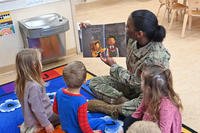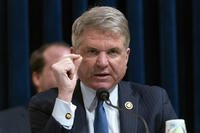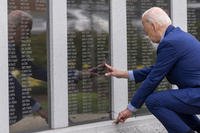The Army's chief of staff says the service will reduce the number of non-deployable troops in the force by as many as 20,000 soldiers this year.
In 2015, the Army had 153,000 non-deployable soldiers across the active duty, National Guard and Reserve, about 15 percent of the total force, Gen. Mark Milley said, describing how the service has reduced that number to between 60,000 and 70,000 soldiers.
"That number is much lower, at 6 to 7 percent, and we are on track to achieve 5 percent this year. That's thousands of soldiers back in our formations ready to deploy," he told an audience Tuesday at the 2018 Association of the United States Army's Annual Meeting and Exposition.
Milley did not clarify whether he meant calendar year 2018 or fiscal 2019, which began this month and ends next September.
The Pentagon's new deploy-or-out policy went into effect Oct. 1, after Defense Secretary Jim Mattis said in February that service members who are non-deployable for more than 12 months do not belong in the U.S. military.
Milley's push to meet the Defense Department's goal of a 5 percent non-deployable rate is part of a plan to bring Army units up to full strength by 2023.
The Army plans to continue to grow over the next several years, bringing operational units up to "90 percent authorized strength this year, 100 percent strength by 2021 and 105 percent strength by 2023, in order to ensure that we have units fully manned and ready to respond when called," he said.
"Why do we want 105 percent strength? Because, on average, the cost of doing business in the Army, Navy Air Force, Marines is about 5 percent non-deployables," Milley explained. "So if we can man the operational forces at 105 percent in units, then that will guarantee that we have 95 or 100 percent of the soldiers present for duty, attending major training events, or if they have to deploy on an operation, they go."
Army Secretary Mark Esper said officials are still "fine-tuning the Army [non-deployable] policy consistent with the DoD policy but ... our expectation is that every soldier must be deployable."
"You cannot have a service where some deploy and some don't," he said. "Every time a soldier doesn't deploy, somebody else takes his or her place."
Milley said senior leaders understand "there are injuries, there are things that happen to people that put you into a temporary non-deployable status. … Our obligation to the soldiers and to the American people is that we have a force, an Army that's combat-ready, and every single one of us wearing the cloth of our country has got to make sure that we are ready to deploy once the nation calls."
He added, "There are exceptions to everything; there are individual waivers ... for individual cases."
The Army's plan is not without challenges. The fiscal 2019 National Defense Authorization Act authorizes the service's active force to grow to 490,000.
Army leaders recently announced an effort to re-energize the service's recruiting program after it missed its 2018 recruiting goal by 6,500 soldiers.
"We want to continue expanding Army end strength to relatively modest numbers. We think we can meet the mission that we are going to set for 2019, but we recognize and acknowledge that we did not meet it for 2018," Milley said. "We are increasing the numbers of recruiters, and we are looking at the locations of where we go and recruit, and many, many techniques of recruiting that we are going to modify over the coming year."
-- Matthew Cox can be reached at matthew.cox@military.com.












